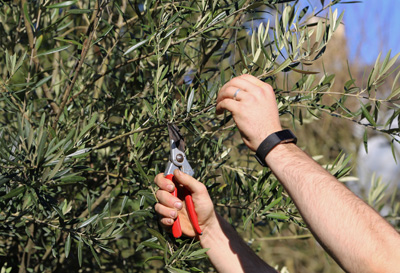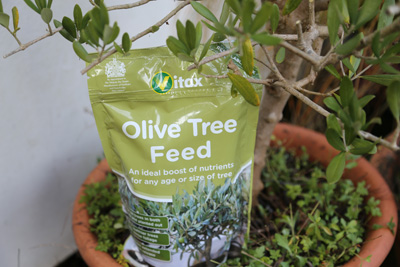Getting the best from your olive tree
Olives, Olea europaea have been treasured and cultivated since ancient times for their fruit which yields that precious oil with a multitude of uses. They thrive in warm, Mediterranean regions where summer temperatures soar and winters are rather milder than they are in many of the places we attempt to grow them.
However, despite their origins olives are tough plants that can survive quite extreme cold. Many grow at high altitudes where winter nights can be chilly. They also survive rough treatment in terms of harvest and pruning. Although they are evergreen, in cold conditions they may drop some, or even all of their foliage after severe weather; don't panic, new growth will appear in spring.
Whether you are growing an olive in a pot or in the open ground you need to consider how olives are treated when grown commercially. The fruit ripens late; according to region the olive harvest can be anytime from early autumn through to mid-winter. Usually nets are spread on the ground to catch ripe fruit which is gathered from the branches using poles or rakes when harvesting is done by hand. The olives must be pressed for oil, or preserved for eating within three days, or they can become bitter.

Olive trees are then pruned hard in late winter to encourage, new, vigorous growth which bears flowers and fruits later that year: fruit is produced on new wood. Pruning keeps the trees compact and healthy and improves foliage quality.
Probably because we treasure the plants we grow in our gardens most of us are reluctant to prune. This results in straggly, weak shoots. They are usually bare at the base with just a few leaves towards the branch tips. The answer is simple: cut back the long shoots by half to two thirds. At the same time remove any dead or weak growth and branches that cross and conflict. In milder areas this can be done in late winter to early spring. In colder regions it is best to wait until the worst of the frosts have passed, then prune. By late spring or early summer the olives may have started to show flower buds. As olives rarely produce a usable crop in the UK cutting off some of the buds is hardly significant.
Olives thrive on mineral- rich, well-drained soils. These do not contain a high proportion of organic matter, so it is best to avoid compost and well- rotted manure. Instead an annual application of Vitax Olive feed will keep your plants in perfect condition. This slow-release fertiliser provided the correct balance of nutrients, including plenty of potash which hardens growth to help your plants through a cold,wet winter.
When growing in pots use John Innes No.3 compost. This is heavier than soil less composts and much better at holding on to water and nutrients. It therefore provides a better growing environment for long-term subjects. In spring or summer, if possible, scrape off the surface of the compost, add a handful of Vitax Olive Feed and top up with fresh John Innes No.3. Water thoroughly and regularly after feeding to enable the roots to take up the nutrients.
Olives like an open, sunny situation, although they will tolerate some shade. They are ideal for sheltered courtyards and balconies and offer a lighter, brighter alternative to dark green bay and box. Although they lend themselves to Mediterranean planting schemes their light, airy habit sits well alongside a variety of shrubs, perennials and roses. They associate especially well with lavender, rosemary, sage and are ideal to provide structure amongst herbs.
Andy McIndoe
Your login details have been used by another user or machine. Login details can only be used once at any one time so you have therefore automatically been logged out. Please contact your sites administrator if you believe this other user or machine has unauthorised access.












